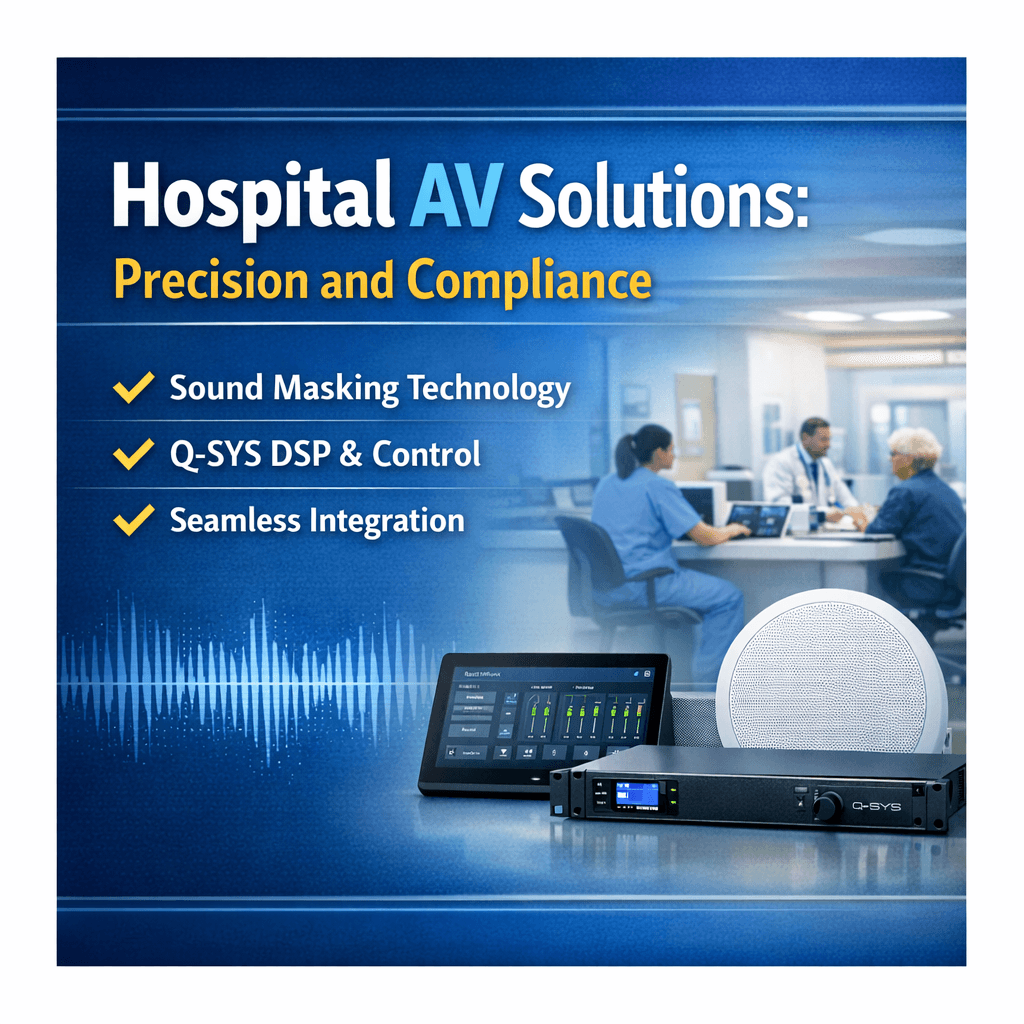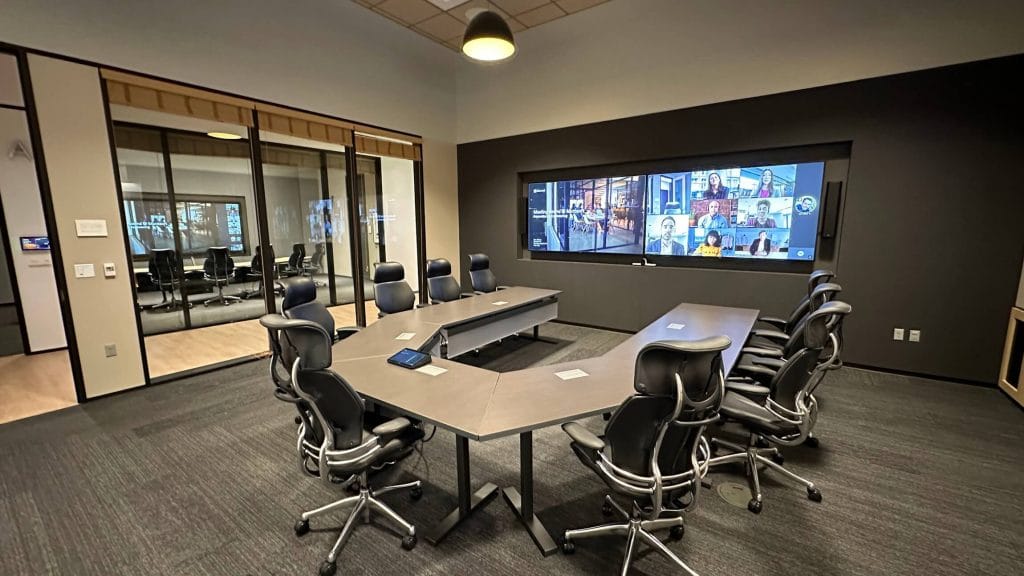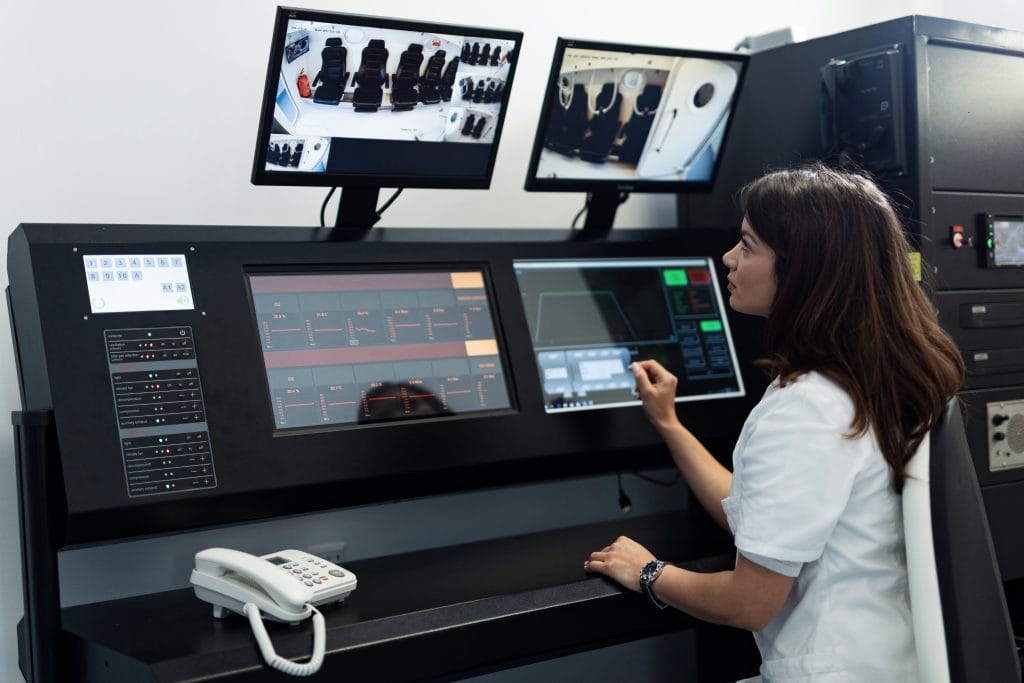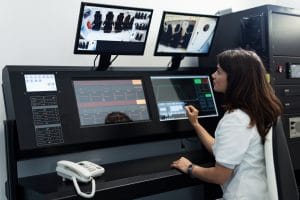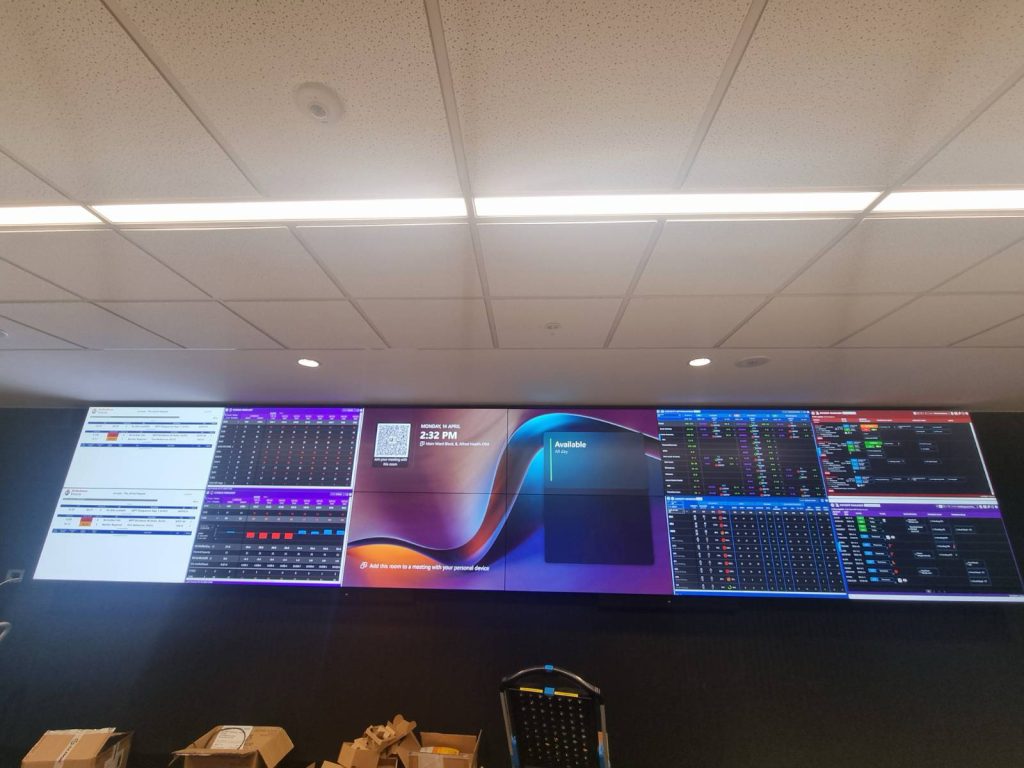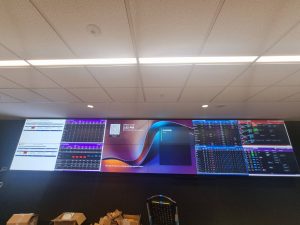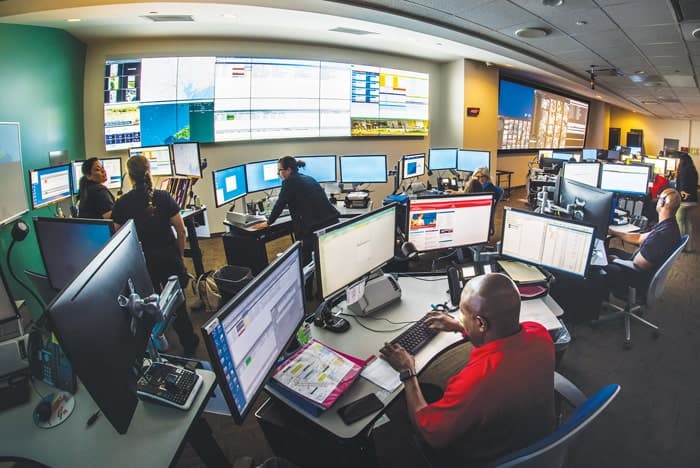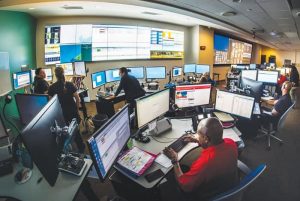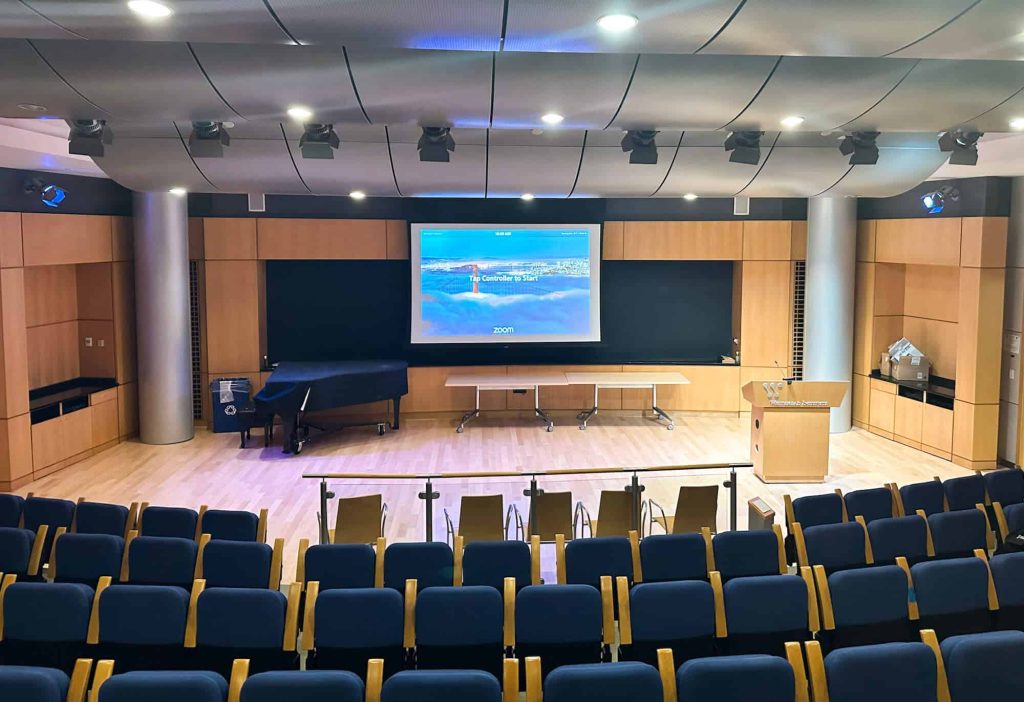Enhancing Healing Environments: The Critical Role of Sound Masking in Hospitals and How It Integrates with Crestron & Q-SYS
Hospitals and medical centres are places of healing, but they are also inherently busy, noisy environments. From the persistent beeping of machines and hurried footsteps in corridors to sensitive patient consultations, the pervasive noise can hinder recovery, cause staff fatigue, and compromise patient privacy.
Zapperr AV understands that a silent hospital is not the goal- an acoustically comfortable and productive one is. The solution lies in a sophisticated AV technology: adaptive sound masking.
When deployed correctly, modern sound masking systems, like those offered by Roadworx, transform chaotic noise landscapes into peaceful, productive environments. The real magic happens when these dedicated systems are seamlessly integrated into your existing, unified control platforms from industry leaders like Crestron and Q-SYS.
Here is a long-form guide detailing how sound masking works, its essential advantages in healthcare, and how Zapperr AV bridges the gap with leading AV control platforms
The Silent Problem: Noise as a Barrier to Care
The World Health Organization (WHO) recommends average hospital ward noise levels remain below 35 dB (decibels) to facilitate patient rest and healing. Yet, many hospital environments frequently exceed 55-60 dB.
This constant noise exposure leads to several critical issues:
- Compromised Patient Recovery: Sleep disruption directly impacts immune function and recovery times.
- HIPAA/Privacy Violations: Conversations at nursing stations or in consultation rooms can easily be overheard.
- Staff Stress & Errors: Persistent background noise increases cognitive load and auditory fatigue for clinicians.
Sound masking addresses this fundamental environmental challenge head-on.
What is Sound Masking and How Does It Work?
Sound masking is not about creating silence; it’s about strategically adding a controlled, comfortable, and unobtrusive background sound- often described as a soft, ‘whooshing’ sound, that is specifically engineered to match the frequency of human speech.
The Simple Science: How We “Mask” Speech
It might sound counterintuitive to add noise to solve a noise problem, but there’s a simple science behind it. Sound masking isn’t just about cranking up a fan; it’s about strategically using sound to cover up distractions.
Think about human speech. It travels at a certain frequency. Our system introduces a consistent, unobtrusive background sound- often described as soft airflow- that is engineered to match the frequency of human speech.
The physics behind it is simple yet powerful:
- Raising the Ambient Floor: Sound masking raises the overall volume of the ambient background sound in a space.
- The Science of Inintelligibility: By introducing this calibrated noise, the relative volume difference between a distracting noise (like a conversation) and the new background sound is reduced. This makes distant conversations less intelligible and less distracting to the ear and brain.
- Adaptive and Smart: Modern systems, such as Roadworx’s offerings, use real-time noise sensors strategically placed in ceilings. These sensors constantly monitor the room’s actual noise levels and automatically adjust the masking volume up when the room is busy and down when it’s quiet. This happens so gradually that occupants are completely unaware of the volume changes—they only notice the enhanced comfort.
Key Advantages of Sound Masking in Hospital and Medical Centre Environments
The benefits of implementing a professional sound masking system are significant and multi-faceted, impacting patients, staff, and administration.
- Guaranteed Speech Privacy and Regulatory Compliance
This is arguably the most crucial benefit. In medical centres, protecting patient information is paramount for maintaining trust and complying with stringent privacy regulations (like HIPAA in the US or similar privacy laws in Australia). Sound masking ensures that sensitive patient records and conversations remain confidential, creating acoustical ‘privacy bubbles’ without needing expensive structural renovations. - Improved Patient Comfort and Restorative Sleep
A healing environment is a quiet environment. By eliminating sharp, distracting noises and facilitating restorative sleep, sound masking directly contributes to faster patient recovery times, shorter hospital stays, and improved patient satisfaction scores. - Enhanced Staff Productivity and Focus
Clinical environments demand high levels of concentration. Sound masking reduces auditory distractions and cognitive fatigue for doctors, nurses, and administrative staff, leading to fewer errors, better decision-making, and a less stressful working environment. - Cost-Effective Acoustic Solution
Compared to traditional acoustic treatments (adding insulation, building new walls, installing sound-rated doors), sound masking is a highly cost-effective way to achieve immediate improvements in acoustic comfort and privacy within existing floor plans.
Seamless Integration: Unifying Sound Masking with Crestron & Q-SYS
A dedicated sound masking system is a powerful tool, but its true potential is unlocked when it integrates seamlessly into the hospital’s central AV control infrastructure. Zapperr AV specializes in linking these systems using unified platforms like Crestron and Q-SYS.
Integration allows facility managers and AV staff to manage the entire hospital environment—lighting, climate, digital signage, PA systems, and sound masking, from a single touch panel or remote management dashboard.
How It Works with Crestron
Crestron is a staple in institutional AV control, providing the robust processors and user interfaces that manage complex hospital systems.
- IP-Based Communication: Modern sound masking systems are IP-native. The Crestron control processor (e.g., a 4-Series controller) communicates with the sound masking server or controllers over the standard hospital network infrastructure.
- Simplified User Interface: Zapperr AV designs custom Crestron touch panel interfaces that provide staff with simple controls: adjusting masking levels in specific zones, scheduling ‘Quiet Hours,’ or receiving system status alerts.
- Crestron XiO Cloud Management: For large hospital campuses, all systems can be monitored and managed remotely via Crestron’s cloud platform, streamlining maintenance and support.
How It Works with Q-SYS
Q-SYS, by QSC, is a powerful, software-based audio, video, and control platform that is becoming increasingly popular in large-scale installations due to its flexibility and ecosystem approach.
- Native Control Integration: The Q-SYS Core processor can manage the sound masking system as part of the overall AV programming environment.
- Centralized DSP & Control: The Q-SYS platform can handle complex Digital Signal Processing (DSP) for all hospital audio (including PA and background music) while simultaneously acting as the control conduit for the dedicated masking hardware.
- Priority Ducking Logic: This is critical. The Q-SYS platform can be programmed to instantly reduce the sound masking volume by a precise, calibrated amount when a hospital page is broadcast, ensuring the page is clearly heard without a jarring cutoff.
- Visual Monitoring: Facility managers can use Q-SYS touch screens or the Q-SYS Reflect Enterprise Manager to visualize zone activity and masking levels in real-time on a digital floor plan.
Challenges and Key Considerations for Implementation
While the benefits are clear, implementing sound masking in an active healthcare environment requires careful planning and expertise. Zapperr AV navigates these challenges through careful consultation and design:
- Optimal Emitter Placement: The success of sound masking hinges entirely on where the small speakers (emitters) are placed within the ceiling plenum. They must be evenly distributed and tuned correctly to ensure a uniform sound field without creating distracting “hot spots” of noise.
- Retrofitting vs. New Builds: Working around existing infrastructure (ducting, wiring, fire suppression systems) in a functioning hospital requires meticulous planning and installation during off-hours to avoid disrupting patient care.
- Tuning and Calibration: The system needs professional acoustic calibration using sensors to ensure the sound spectrum is tailored precisely to the room’s unique acoustic signature and background noise levels. An improperly tuned system can be more distracting than helpful.
- Integration Complexity: Ensuring smooth, reliable communication between the masking hardware and the core control platforms (Crestron, Q-SYS) requires specialized programming knowledge to maintain system stability and reliability 24/7.
Zapperr AV: Your Partner in Acoustic Comfort
Acoustic design is no longer a luxury in healthcare environments- it is a necessity for patient well-being and operational efficiency.
Zapperr AV specializes in designing and installing tailored sound masking solutions that integrate seamlessly into sophisticated AV control ecosystems like Crestron and Q-SYS. We transform noisy medical facilities into restorative, private, and productive spaces.
Your Smart Signs Aren’t Smart Yet: Why the ‘Invisible Wiring’ of Code Makes or Breaks Your Crestron System
Let’s be honest: setting up a few smart screens in your office or hospital seems straightforward enough. You buy the hardware, plug it into the network, and expect magic to happen.
But if you’ve ever walked past a blank screen, a frozen error message, or a meeting room sign that stubbornly says “Available” while a confidential board meeting is happening inside, you’ve experienced the silent failure of poor integration.
At Zapperr AV, we see this all the time. The problem isn’t the shiny new Crestron touch panel or the sleek digital display. The problem is the ‘invisible wiring’ that connects them: the software programming.
We’re here to talk straight about why expert, precise AV programming is the non-negotiable secret ingredient for unlocking the real power of your digital signage network.
The Big Myth: “It Just Plugs In, Right?”
In an ideal world, all technology would be plug-and-play. But commercial AV systems live in the complex, real world. You have a Crestron controller managing the room, a third-party content management system (CMS) like Appspace pushing content, and a display from LG or Samsung hanging on the wall.
These devices speak different “languages.” A simple command like “Turn On” is interpreted differently by every manufacturer. The programming is the crucial interpreter, making sure everyone is reading from the same script.
Generic, off-the-shelf programming often results in generic, unreliable results. If you want a system that actually works when you need it most, you need precision engineering under the hood.
Where the Magic of Precise Programming Delivers Real ROI
It’s the small details in the code that stop big headaches in the boardroom or the emergency room waiting area. Here’s how precise programming delivers tangible value:
1. Automation That Actually Works, Instantly
The value of integrated smart signs is making processes automatic so your staff doesn’t have to worry about them.
Consider the seamless experience you want: The moment someone plugs a laptop into a meeting room presentation system, the wall sign instantly changes from “Welcome” to “In Use.” The screen immediately switches from a looped news feed to the presentation source.
Consider the reality of bad programming: There’s a 10-second delay. The presenter fumbles. The audience watches a cooking segment while waiting for the PowerPoint to load.
Precise programming eliminates those awkward delays. It ensures the commands are sent and acknowledged instantly, every single time. It creates the smooth, professional workflow your business paid for.
2. The Reliability You Need for a 24/7 World
A hospital can’t afford for a critical safety alert sign to freeze. A corporate office can’t have screens go blank during a client visit.
Basic programming assumes everything will always work perfectly. Expert programming assumes things might go wrong and plans for it.
At Zapperr AV, our code includes “error handling” and health checks. If the network drops for a second, the system knows to wait patiently, reconnect, and verify its status. Instead of freezing up and needing a manual reboot, it heals itself and logs the issue so we can fix it proactively via the Crestron XiO Cloud management platform. It’s about resilience, not just functionality.
3. A User Experience That Makes Sense
You shouldn’t need an IT degree to manage your building’s communication network.
Precise programming translates complex back-end logic into simple, intuitive touch-screen buttons. We design user interfaces (UI) within the Crestron ecosystem that make sense to your team:
- A simple “Activate Emergency Alert” button that triggers hundreds of coordinated actions in the background.
- A “Volume Up/Down” slider that talks directly to a specific sound masking zone.
It’s about making powerful technology feel effortless to use.
Zapperr AV: Beyond Wires and Screens
Anyone can install the hardware. The true specialists are the ones who make the technology smart.
In the world of networked AV and smart buildings, the programming isn’t just an afterthought—it’s the engine driving your entire operation.
Don’t let generic programming limit the potential of your digital signage network. Partner with Zapperr AV to ensure your system performs exactly as it should, every time you need it.
The Secret Weapon: How Subcontracting AV Programming Unlocks Growth
Let’s be real for a second: The AV industry is a rollercoaster.
One month, your team is drowning in work, scrambling to meet five deadlines at once. The next? You’re staring at a utilization report, wondering why your most expensive senior programmer is spending their day cable managing a rack because there’s no code to write.
For AV Integrators, this “feast or famine” cycle is a margin killer. For Building Companies and MSPs, it’s the main reason you hesitate to bid on the lucrative “smart building” or “meeting room” slice of the pie. You want the revenue, but you don’t want the headache of hiring a full-time automation engineer.
Here is the truth: You don’t need to own the resources to own the result.
Subcontracting AV programming isn’t just about handling overflow anymore. It’s a strategic lever that smart businesses use to stay lean, bid bigger, and move faster. Here is why shifting your mindset on programming can transform your bottom line.
1. Stop Paying for Downtime (Crushing Overheads)
Hiring a senior programmer—someone who truly knows their way around Crestron, Q-SYS, and HTML5—is expensive. We’re talking high salaries, software licenses, ongoing training, and benefits.
That cost is fixed, whether you have a project for them or not.
By partnering with a specialist programming team, you flip that model on its head. You turn a scary fixed cost into a manageable variable cost. You only pay for the code when you have a signed contract in hand. No idle time, no payroll anxiety—just pure execution when you need it.
2. Protect Your Margins (No More “Black Holes”)
We’ve all seen it: A project is “finished,” but the programmer is still on-site for two weeks tweaking code because the scope wasn’t clear or the in-house team got pulled into troubleshooting cabling issues. There goes the profit margin.
When you subcontract to a pro, you agree on a scope and a fixed price before the job starts. This brings incredible clarity to your bidding. You know exactly what the programming will cost, protecting your margins from the dreaded “scope creep” that plagues internal departments.
3. For MSPs & Builders: Tap Into Revenue You’re Ignoring
If you are an MSP managing a client’s IT network, or a Builder constructing their office, you are already in the room. Why let a third-party integrator take the check for the smart meeting rooms and automation?
You might be thinking, “We don’t know how to program Q-SYS or design a UI.” You don’t have to.
Subcontracting allows you to expand your portfolio overnight. You handle the client relationship and the infrastructure; your programming partner handles the complex logic and user interfaces. You get to offer a complete “turn-key” solution, adding massive value to your client without the risk of hiring a new department.
4. Access “Niche” Genius on Demand
The AV world is fracturing. It’s no longer just about proprietary code; it’s about HTML5, Python, API integrations, and secure networking. It is nearly impossible for one in-house guy (or even a small team) to be an expert in everything.
By maintaining a relationship with a dedicated programming firm, you gain a “bench” of experts.
- Need a complex custom widget in HTML5? Done.
- Need a secure Q-SYS plugin written in Lua? Sorted.
- Need a Cisco Room Kit integration? Easy.
You get access to diverse, high-level expertise without the recruitment nightmare.
5. Fast-Track Your Timelines
In the current climate, clients want systems deployed yesterday. An in-house team has a bandwidth limit. If they are deep in a massive university project, they can’t pivot to handle that sudden corporate HQ bid that just landed on your desk.
Subcontractors provide instant scalability. You can say “Yes” to more work, knowing you have a partner who can run parallel tracks with your internal team. Plus, because specialized programmers don’t get distracted by pulling cable or hanging brackets, they often deliver functional code significantly faster.
The Bottom Line: It’s About Agility
In 2025, the most successful Integrators and MSPs aren’t the ones with the most staff—they are the ones with the most agility.
Subcontracting AV programming gives you the freedom to scale up, scale down, and take on complex technological challenges without betting the farm on overheads. It allows you to focus on what you do best—building relationships and managing projects—while the experts ensure the buttons work, every single time.

